House History Blog
|
A deep interest in history is present in many of us. We are captivated by the past, and the growing trend of exploring our family's genealogy is evidence of this. Old houses serve as a living exhibit of history, they are the backdrop against which our forebears lived their lives. I've been exploring the history of my first home for over 40 years, and ever since, have been captivated by the tales each one holds. I am curious about who constructed my house, the modifications it has undergone, and, of course, the stories that might have unfolded within its walls. It's fascinating to think that not that long ago, well before the NHS, hospitals and social care our ancestors gave birth, raised their families, and very often passed away in the home. It's possible that the house history you want to research isn't your own; it could be your ancestors' or a place you've visited many times, sparking your curiosity. You could be a tenant. Regardless, this article will guide you on how to uncover the history of any home or building. Every home, regardless of its age, carries a history, whether that be thatch, tiles, or other materials. The era and location where a home is situated influence its design, dimensions, architectural style, function, composition, and overall appearance and atmosphere. The most intriguing aspect of a home's history is discovering the individuals who called it home and the potential dramas that may have unfolded within its walls. It's a reminder of the long-standing presence of our ancestors, from their births to their passing. Tracemyhouse.com provides a complete guide to everything you could want to know about tracing your homes history. So! What do you know about your house? The obvious place to start is with your house deeds. If you have them then you are in luck and at the very worst (if they are in tact) they will tell you something about the history of your house and the people that lived in it. If you do not have your deeds it may be that your mortgage provider or solicitor has them. Get in touch if you can and ask if you can have them or a copy. You can apply to the Land Registry for a copy of the registration records of the house you are researching. These will exist only if the house has been sold or transferred since compulsory registration was introduced: 1899 in London, 1979 in Scotland, 1990 in England and Wales, 2003 in Northern Ireland. If the house is registered, you will receive details of sales, boundary plans, owners, mortgages and other historical information. For more information go to - Land Registry for England & Wales Land Registry for Scotland, Land Registry for Ireland. Some historical deeds can be found in archives so it is worth asking the local record office or local studies library. Read more about using the Land Registry here Talk to your neighbours to see if someone has already researched their house or the area. See if they know more about the history of the street or village. Download our checklist and advice for talking to neighbours If it is not your house, then dependent upon where it is, you may have to travel to find out more. Most county councils, unitary authorities and some large town councils have a record office, or a local studies library. If you have to travel it’s a good idea to see what information your council has available online or by telephoning them or looking at their website. Write down every thing you know about your house right now. Take down details of dates, and occupiers if you have the original deeds. Keep notes and copies of records you find. Build up a picture – timeline- of your house history. Even the most insignificant piece of research should be jotted down because it might come in useful later as more information is uncovered. For more details and further links go to Tracemyhouse.com Neighbours – tracemyhouse.com To research the history and development of a house, the various maps and plans can provide invaluable information. Maps also are useful because when house names or numbers change its position on a map remains constant. Use maps to work back and make sure you note important buildings such as local churches, schools, pubs etc because they tend to remain in place when streets change. If you can step back in time with maps it should be possible to note when your house first appears on a map. What you might find
For more details and further links go to Maps-tracemyhouse.com  A map showing Hill Top one of Beatrix Potters houses near Sawrey in Cumbria. Later she lived in Castle Cottage nearby but kept Hill Top Farm where she continued to write her famous stories about Jemima Puddle-Duck and Tom Kitten. Old photographs are invaluable in understanding the changes and history of a building. They can reveal architectural modifications, provide context about the surrounding area, and offer insights into the lives of previous occupants. Historic England Archive has a wonderful collection of historic photographs, drawings, and documents related to buildings and landscapes in England.Local Record Offices often hold extensive collections of photographs, maps, and documents related to the local area. These may include images of buildings, street scenes, and significant events.Listed Buildings and Images of England Project is an online photographic library that aims to capture and preserve images of listed buildings across England. For more details and further links go to Photos-tracemyhouse.com Using newspapers for house history research can provide valuable context and detailed insights into the history of a property and its occupants. Newspapers often contain advertisements, articles, and notices that can help piece together the story of a house over time. What you might find National Archives: Holds extensive collections of historical newspapers.
British Newspaper Archive: Offers access to millions of pages of digitised historical newspapers from across the UK For more details and further links go to Newspapers-tracemyhouse.com Researching the history of a house through wills and probate records can be a fascinating way to uncover information about its past owners and their lives. What you might find
Wills before 1858 are usually found at local record offices or in the Prerogative Court registers, which can be viewed at the National Archives. Wills of a later date are held at the Principal Probate Registry. For more details and further links go to Probate-tracemyhouse.com Manorial and estate records are invaluable sources for researching the history of a house, as they can provide detailed information about property ownership, tenancy, and the management of estates. Manorial records are documents related to the administration of a manor, the basic unit of land tenure in feudal England. These records can date back to the medieval period and continue up to the early 20th century. What you might find
Where to Find County Record Offices: Most manorial records are held in local county record offices or archives. The National Archives (TNA): Some manorial records are housed at The National Archives in Kew, London. Manorial Documents Register (MDR): An online database managed by TNA that helps locate manorial records. For more details and further links go to Manorial-tracemyhouse.com Estate records pertain to the administration and management of large landed estates, typically owned by aristocratic families. These records can provide detailed insights into the buildings, tenants, and land use on the estate. What you might find
County Record Offices: Many estate records are held in local archives. The National Archives: Some estate collections are housed at TNA. Private Collections: Some estate records remain in private hands, often retained by the families that owned the estates. Access may be granted upon request. For more details and further links go to Estaterecords-tracemyhouse.com  This was also known as the Lloyd George Domesday Survey and was introduced in 1910, and valued all property in preparation for a new land tax. The survey of England and Wales was completed by 1915. The tax was never implemented, and the Act was repealed in 1920 but it provides a useful snapshot of life around 1910.. What you might find There are three sets of records:
Some records survive and are held in the National Archives although these are being digitised and indexed by The Genealogist. For more details and further links go to Inland Revenue-tracemyhouse.com The Electoral Register is a valuable resource for tracing the history of a property and its occupants. These registers were compiled annually starting in 1832. We suggest you start with the most recent electoral register and work backward to see who lived there. By noting the names and comparing them across different years, you can identify patterns such as long-term occupancy or frequent changes. This information can be supplemented with census records to provide additional context, such as occupations and family relationships. What you might find
Local Record Offices and Studies Libraries, The National Archives Online Databases - several genealogical websites, such as Ancestry, Findmypast, and others, have digitised versions of electoral registers. These can be searched by name, address, or other criteria. An increasing number of electoral registers and poll books are available on commercial websites such as Ancestry.co.uk (charges apply) and Findmypast.co.uk (charges apply) The electoral registers from 2002 onwards are available online at 192.com (£) The National Archives have collected a list of historical versions of the electoral register that you can search online. For more details and further links go to Electoral registers-tracemyhouse.com Census records in the UK have been an essential tool for house and genealogical research. They have been conducted every 10 years since 1801, although the early censuses in 1801, 1811, and 1821 only recorded the number of people rather than individual names. However, records from 1841 to 1921 provide a rich source of historical data including What you might find
Many online platforms provide searchable databases of these records, often with transcriptions and images of the original documents. Some of the prominent platforms include Ancestry, Findmypast, and FamilySearch. They are also available at local record offices and some libraries. For more details and further links go to Census-tracemyhouse.com
The 1939 Register was compiled on 29 September 1939, shortly after the outbreak of World War II. It was used to issue identity cards, ration books, and later, to manage conscription and the National Health Service (NHS). It includes information about each person’s address, name, date of birth, occupation, and marital status. What you might find
Online Databases- The 1939 Register is available online through subscription-based services such as Ancestry.co.uk and Findmypast.co.uk. You can access these at home or through libraries that offer free access to these databases. National Archives**: Visit the National Archives in Kew, London, which holds the original register. Some local archives or family history centres might also have access. For more details and further links go to 1939Register-tracemyhouse.com Using telephone books to research house history is particularly useful for tracing past residents and understanding the historical context of a property. Here's how telephone books can be helpful and some steps to use them effectively: What you might find
Visit local libraries, historical societies, or municipal archives. They often have collections of old telephone directories. Some websites and digital archives offer scanned copies of historical For more details and further links go to Telephonebooks-tracemyhouse.com Birth, marriage, and death records are valuable tools for researching the history of a house as they provide personal details about the individuals who lived there, their family connections, and significant life events. Since 1837 when civil registration started there have been records of all births, marriages and deaths before that the records were maintained in parish registers held now in record offices or the original parish churches. What you might find
Online Databases: Websites like Ancestry.com, Findmypast.co.uk, FamilySearch.org, and others provide access to extensive collections of birth, marriage, and death records. Local Archives and Libraries: Local government offices, archives, and libraries often hold these records. Civil Registration Offices: In many countries, civil registration offices maintain birth, marriage, and death records.a For more details and further links go to BMD-tracemyhouse.com Sale catalogues for house history Sale catalogues are a valuable resource for researching the history of a house. They provide detailed descriptions of properties at the time they were offered for sale, often including architectural details, land measurements, and even contents. Here's a guide to understanding and using sale catalogues for house history research. What you might find
Local Archives and Record Offices, Special Collections in Libraries, The National Archives, Online Databases and Digital Archives and not least local historical societies often collect sale catalogues, especially for historically significant properties in the area. For more details and further links go to Sale Cats-tracemyhouse.com licences Trade directories can be a valuable resource when researching the history of a house in the UK. These directories, which were published from the late 18th century onwards, What to find
Where to Find Ancestry.co.uk: Historical Directories: Hosted by the University of Leicester, provides free access to a selection of historical directories. The National Archives: Lists sources and may have digital or physical copies. British Library: Holds a comprehensive collection of trade directories. For more details and further links go to Directories-tracemyhouse.com This has been a quick run through the records that will help you discover more about your house and its occupiers. . There are many more that could help. We haven't covered insurance or tax, tithe maps and apportionments, enclosure maps and awards or the The cNational Farm survey.
So Visit TracemyHouse.com to discover more.
0 Comments
I have been interested in house names for as long as I have studied and traced house histories. They fascinate me. They can be whimsical they can be serious, historic or even descriptive. That is what I like about them. I am sure, like me, you have passed a house and wondered how it got it’s name. Here hopefully are a few pointers. Names were often chosen to make a statement about the house or the owner, perhaps to describe it’s whereabouts so every now and again they tell you something of the building’s history or clues to previous inhabitants. Of course, not everyone named their house. In fact, according to the Land Registry only about 8% of our Nation’s houses have names. Also, it should be said at the outset that we seem to have a rather ambivalent attitude towards the practice. A feeling that the Oxford English Dictionary did little to assuage, when it provided as an example of the word naff “to name your house “Gables” or “Mon Repos.” 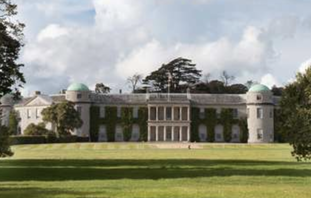 Goodwood House the home of the Duke of Richmond Goodwood House the home of the Duke of Richmond It seems we accept that the homes of our landed gentry should bear a name. - Arundell House, the seat of the Earl of Arundel or Leicester House built by the Dudley family who were Earls of Leicester for instance, but many of us consider the naming of our suburban residences a little tacky. Yet according to Laura Wright in her wonderful book “Sunnyside,” people have named their homes for as long as there have been dwellings and examples go back to earliest English literature with the Meadhall in the epic poem Bewulf named Heorot. Throughout time we can find the use of Haw, Seld, Hallhouse and Bury frequently used with la Bordhawe, Brantefeldesselde, Ceolmundshaw as examples.  Longbottom A house in a deed dated c 1738 Longbottom A house in a deed dated c 1738 A rich source of house names can be found in medieval deeds and wills many of them describing the householder, their occupation and the appearance of the house. La fforge (1357), leCrokedhous (1335) Gladewyneshouse in Thamysestret (1328) A certain Katherine was bequeathed a tenement in 1313 intriguingly named la Hole and her brother Reginald a seld called Andovreselde in 1303. In 1290 a house named Beaurepair appeared which may be an early example of a foreign name being used on a house as there are several Beaurepairs’ villages in France. In 1285 there is reference to the rent of a tenement called Litelcaponhors as well as the “tenement “wherein she dwells”, called le Meire. In Wood Street Oxford can be found Blacke Hall formerly owned by wood seller Michael ‘de Wodestrate in 1160 which by 1361 was Blackhalle. Malsuppine in Shoreham, Sussex was sold in 1346 as a tenement which underwent many changes until 1703 since when it has been recorded as Marlipins. A deed of 1414 mentions The Old Barge, a stone and timber house named after the barges on the river nearby. Still to be found are The Jews House in Lincoln dating from around 1150 and the 12th century Music House in Norwich. In London in the 17th Century boundaries of some wards were described by the names of the houses in the streets – rather like a census enumerator’s log much later, as in “from a cook’s house called The Sign of King David…. into Huntington House…… “  Batemans in East Sussex Batemans in East Sussex Naming continued throughout the ages with many inspired by heraldry, crests, religious overtones, travel, occupations and the appearance of the building or the surrounding geographical features. Early house names were often identified by location – “a dwelling house by the orchard” or by a name associated with the owner. Batemans in Burwash built in 1634 for Mr Bateman the owner of a local forge and later bought by Rudyard Kipling is an example. Less grand names can be found in leases such as William’s Tenement or Bassey’s Cottage. Cockspur is a 16th century cottage thought to have been a venue for cockfighting. Whereas in Watchet, Somerset it is believed that fisherman used to set traps for fish in the river immediately outside Trap Hole Cottage. Atkins Living is on land owned and worked in the Middle Ages by the Atkins family Lots of names described the location or terrain such as Highlands or Broadlands or sometimes names are based upon the style or features of the house itself. Gables, Gable End, Six Gables or more often Chimneys, Tall Chimneys or even the Scottish Lum Reek (which I think translates as smelly chimney). The Pillars, High Walls all reflect the architectural merits of the building. Whilst by contrast I found the Bendorbump in Hawkshead, Crooked Cottage in Whitby, and Old Bent House near Rochdale, which all point to less successful architectural achievements. 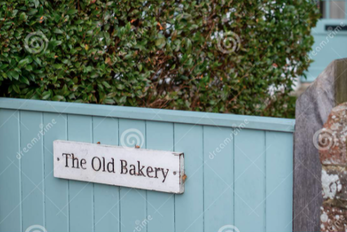 As the urban sprawl developed, old field names vanished but armed with tithe maps it is possible sometimes to find clues in house names such as Ropers, built on the site of Ropers Shaw, Burrows Ridge and Bishops Croft all celebrating the former owners of the land. Sometimes it was quite common to have a name suggesting the acreage owned for instance Longacres, The Furlongs, North Hide (hide was a term that used to refer to 120 acres) or Spencers acre which combines the size and ownership of the field. On the subject of acreage someone suggested a rather wealthy dentist lived at Toothacrers but I have not seen that. Houses named after former occupations are many, as in Blacksmiths Cottage, Spindles a spinners cottage or Cordwainersand Cobblers pointing to former shoemakers. Where a farm or rural commercial building are converted to modern homes clues remain, as in The Coach House, Stables End and The Old Barn. Of course, Glebe Cottage, The Rectory, Manse or Priory Housel usually indicate that the land was once owned by the church, whilst Brewers and names such as The Old Plough all point to homes that have been converted from redundant hostelries. Witch Post Cottage is found in Yorkshire where builders would place the cross of Saint Andrew on the fireplace post or lintel to prevent witches flying down the chimney and entering the house to do mischief. Some names are just down right clever. Joyce Mills refers to Divyend a converted co-op store and Expo formerly a post office as examples. Obviously, the principal reason for naming a house is a means of identifying it, although of course in earlier times they didn’t always need identifying. That is as long as you were local. A house near Crowborough, East Sussex in 1780 was named The Cottage. Sixty or so years later when the census came along it didn’t even need a name as it was sufficient to identify it as Hobbs, Crowborough, Hobbs being the occupant and living at that time in one of only 20 dwellings in the village. Everyone new Hobbs. Fast forward to today and now the village is swallowed up by a much bigger urban sprawl and The Cottage has combined it’s name to Hobbs Cottage which it received around 1920, showing how house names can sometimes provide links to the house’s history As towns grew there was a need to be able to identify streets of houses, so in 1765 a numbering system was introduced in which typically houses on the left going out of town centre were given odd numbers and, on the right, even. Whilst a large number of the new crescents, terraces and squares were now numbered - house names were being added too and some of the grander homes built for the new middle classes were named after aristocracy – Montague Lodge, Sussex Villa, Somerset House etc. However, another even greater and lasting transformation was about to occur which was going to have an effect on our towns and villages as well as the naming of properties. The arrival of the railway. When the railway arrived in the 1840s villages and townships grew, often ad hoc, around the station and it was difficult to number the homes sequentially so house names were employed. Even where streets in the new suburbs were formed, they were often given house names because numbering was not possible until the whole street was finished and that often got delayed because of land ownership issues as well as the builders’ timetables. 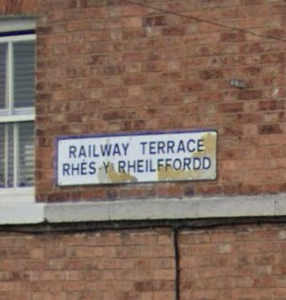 This growth gave housebuilders an opportunity to use their imagination when trying to capture the Victorian prospective home owner and a new category of house names came into being – the hybrid. Rural idyllic place names were merged with local nature to get Ferncroft, Ferndale, Elmdene and Roselea, all of which were designed to make the new suburbanite feel that he had not strayed far from his rural roots. Thus, we find - not surprisingly - the house names in these growing towns were not that different from the villages that the occupants had left behind, although there were a few notable changes in the terminology used. The name “lodge” for instance was no longer a gatehouse at the entrance to an estate, but a gentlemen’s residence. Whilst “cottage” ceased to be associated with a small rural worker’s home, but was now a substantial property. Other changes can be noted too such as Villa became substituted by -ville to producing names like Woodville and Roseville. So as urban development continued up to and after the wars so did the plethora of house names. Some house names derive from interesting combinations. A medley of place or personal names were described by Joyce Miles in her book “Owls Hoot - How people name their houses” and she mentions Mr Mrs Bird living in The Nest, The Wildes family who chose Goose Chase; The Foxes at Reynard, the Redheads who live at Coppernobs and Mr Mrs Gammon whose house was named Rashers. All true. So that was a quick and mostly light hearted run through the history of house names. Sadly, I think there has been very little in depth study of the subject. Yet, whilst some names can be frivolous or based upon an emotional tie to the building some can provide a signpost to the house, its occupants history or indeed help us understand more about social and local history. The books or studies I have discovered are listed here- Books
Sunnyside – A History of British House Names by Laura Wright, Published by Oxford University Press Web link **Recommended read House Names Around the World by Joyce C Miles Published by David & Charles 1972 Owls Hoot – how people name their houses by Joyce Miles Published by John Murry 2000 Study House Style: the politics, conventions and practices of house -naming in 19th century Cheltenham by John Simpson British Society for Local History 2019. **Recommended read Local place names in Medieval Bristol & Gloucestershire Archaeological Society 129 (2011), 155–196 Web link Papers /BlogsThe Significance of House Names to Family History by Judith Bachelor Web link **Recommended read How house names tell the story of centuries of social change in Britain by Dr Laura Wright. British Academy Monograph Web link Useful Resources Medieval Manors and their records. Web link What’s in a house name – Bristol Web Link Historical gazetteer of London before the great fire By D J Keene and Vanessa Harding. Originally published by Centre for Metropolitan History, London, 1987.British History Online Web link A- Z Edwardian London preface/introduction The 20 most popular house names in the UK Article in House Beautiful Magazine Web Link Choosing the best web sites for house history research is quite difficult because most of the well known sites are designed for those tracing family history. Whilst house and family history are not too dissimilar, the one important difference is that house historians only trace people for as long as they are occupying the house – moving on when they leave, to the next owner or tenant. So ,these "top"sites have been chosen with the house and its occupants in mind. The second issue is that there are several subscription sites – Ancestry, Findmypast and The Genealogist that have mostly the same data – that is ,until you look at the records that are most suitable for house historians. So you might be surprised to see The Genealogist preferred to Ancestry in my list. 1. The Genealogist  www.thegenealogist.co.uk/researchguide/overview-of-available-databases-900/Of course it probably doesn’t need to be said, but you will never truly trace the history of your house on-line. Many key records have not been transcribed or digitised so you will have to visit the local or national archives. This however is a list of those websites that we feel will help you most. Although it may have fewer records than its main competitors, The Genealogist is excellent for house and local historians. In particular it has an easy-to-use map and address search facility as well as a unique family search facility which is excellent The Map Explorer is a powerful tool which uses geo-referenced historic maps and the facility to overlay several modern background maps, as well as providing a satellite view. The site already includes all the previously released Lloyd George Domesday Survey maps linked to the field books and they are introducing a facility whereby you will be able to locate owners and occupiers from the tithe maps in The Genealogist's National Tithe Map collection. The Genealogist also has the Returns of the Owners of Land (1873–1876). An excellent review and explanation containing tips for searching The Genealogist collection can be found here 2. The British Newspaper Archive Newspapers provide a commentary on the major occasions in our political, religious, sporting and cultural life, but are also a major source of information on everyday events. Newspapers contain advertisements, reports of social events, accidents, court proceedings and inquests. Some mundane, others exciting glimpses into the daily lives of the occupiers of our houses. You may discover advertisements for houses for sale or to let, sometimes naming tenants as well as owners and possibly detailed descriptions of the house itself and the contents. As well as searching newspapers for details of the house, you are also researching the lives of former occupants. Birth, marriage and death announcements, obituaries or probate notices can tell you so much about former occupants. The British Newspaper Archive, starts in the 18th Century with extensive coverage for the 19th and early 20th Centuries. Local and national titles are added regularly and provide more than forty million pages of fascinating information. This is a subscription site which is alternatively available to Find my Past subscribers as they are owned by the same company. To find out which newspapers have been digitised so far, click on this link ttps://www.britishnewspaperarchive.co.uk/titles Website 3. Find myPast |
STREET AND TRADE DIRECTORIES | |

Directories were published by various companies but the Post Office, Kelly’s, Pigot’s and White’s were the most widely used and these can be found in libraries and record offices. In the early days of directories, they only provided details of commercial businesses and the leaders of the community. Eventually the directories became more comprehensive and householders were included, regardless of social status.
Directories were published by various companies but the Post Office, Kelly’s, Pigot’s and White’s were the most widely used and these can be found in libraries and record offices. In the early days of directories, they only provided details of commercial businesses and the leaders of the community. Eventually the directories became more comprehensive and householders were included, regardless of social status.
The level of information contained in local directories varies, but you should find sufficient details about a house to help you with your research. Directories typically contain street-by-street lists of houses and their principal occupants. However, do remember that house numbers as well as roads sometimes changed when new buildings or the layout changed, perhaps making way for a railway line or new major road. Often houses were renumbered when the postal system was introduced.
The level of information contained in local directories varies, but you should find sufficient details about a house to help you with your research. Directories typically contain street-by-street lists of houses and their principal occupants. However, do remember that house numbers as well as roads sometimes changed when new buildings or the layout changed, perhaps making way for a railway line or new major road. Often houses were renumbered when the postal system was introduced.
Directories will provide you with a description of a town or village and may often be accompanied by maps. These all can help you to form a picture of the district around your house. You should also be able to discover more about the key services such as transport, churches, schools, government offices and shops that served the area as well as information on specific people, businessmen, traders, and shopkeepers.
Where to find directories
Your local library, family history centre or county and town record offices will have a selection of local directories.
By far the best collection on line can be found at the University of Leicester’s Special Collection site.
This collection provides access to scanned images and full-text of the trade directories from the 1760s until the 1910s for most of the UK.
The same content can be accessed via Ancestry, which offers the ability to search by name, place, occupation or keyword, through their database UK, City and County Directories, 1766 – 1946. You will need an Ancestry subscription or you can access this via your local library.
In Scotland try Scotland Post Office Directories.
Read more about Directorie
Your local library, family history centre or county and town record offices will have a selection of local directories.
By far the best collection on line can be found at the University of Leicester’s Special Collection site.
This collection provides access to scanned images and full-text of the trade directories from the 1760s until the 1910s for most of the UK.
The same content can be accessed via Ancestry, which offers the ability to search by name, place, occupation or keyword, through their database UK, City and County Directories, 1766 – 1946. You will need an Ancestry subscription or you can access this via your local library.
In Scotland try Scotland Post Office Directories.
Read more about Directorie
TELEPHONE BOOKS
As with directories, phone books can be helpful in pinpointing individuals in a particular place and time between census years, especially as they were published every one to two years. They were even more important for the years when the census was not available to the public.
BT's historical phone books from 1880-1984 are available online. They have been scanned in collaboration with Ancestry.co.uk, or if you like, you can still see copies of the phone books from 1880 to the present in person at the BT Archives
BT's historical phone books from 1880-1984 are available online. They have been scanned in collaboration with Ancestry.co.uk, or if you like, you can still see copies of the phone books from 1880 to the present in person at the BT Archives
Of course, you have to remember that not everyone had a phone and so would not be in the directory. Also, agreement had to be met to have personal details published. Thus a number of people were “ex-directory”, which means they would not be listed.
Phones became more and more popular, but even in the 1960s it was still considered a luxury item and most people used public telephone boxes. By 1970 only 35% of households owned a phone compared with 90% in 2019
Phones became more and more popular, but even in the 1960s it was still considered a luxury item and most people used public telephone boxes. By 1970 only 35% of households owned a phone compared with 90% in 2019
Subscription site Ancestry has a collection of phone books published between 1880, (the year after the public telephone service was introduced to the UK) and 1984, from the historic phone book collection held by BT Archives. https://www.ancestry.co.uk/search/collections/bt/
You may find these in your local library, family history centre or record office. It's worth checking and you may be able to access the Ancestry collection for free from there too.
Read more about Telephone Directories
You may find these in your local library, family history centre or record office. It's worth checking and you may be able to access the Ancestry collection for free from there too.
Read more about Telephone Directories
ELECTORAL ROLLS OR REGISTERS
Electoral registers contain lists of names of people entitled to vote. These lists which were created each year, set out the names of those who were eligible to vote, with their reason for eligibility, such as their residence or ownership of a property.
During the 19th and early 20th centuries the vote was gradually given to more and more people and was eventually extended to working class men and thanks to womens‘ suffrage, finally to women.
During the 19th and early 20th centuries the vote was gradually given to more and more people and was eventually extended to working class men and thanks to womens‘ suffrage, finally to women.
The registers can therefore help us to discover the period that adult members of a family lived at a certain address.
From 1918, and more so since 1928, the registers list all adult members of the household, both male and female. However, unlike the census, they never show place of birth, details of children under the age of 18 and other similar information.
Never the less these entries help us form a picture of the households as they evolve.
As younger members of the family are entered in the register, we can assume they have reached voting age and therefore it is possible to calculate their approximate year of birth. Even more helpful, from 1950 the register lists all those that will be become 21 during the coming year and from 1970, the birth dates of those who will become 18 during that voting period..
Even prior to 1918 the registers give a fairly precise indication of the family's property holdings, needed to have the necessary voting qualifications.
So, to help us understand what information could be available, it might be useful to briefly consider how the right to vote changed over the years.
From 1918, and more so since 1928, the registers list all adult members of the household, both male and female. However, unlike the census, they never show place of birth, details of children under the age of 18 and other similar information.
Never the less these entries help us form a picture of the households as they evolve.
As younger members of the family are entered in the register, we can assume they have reached voting age and therefore it is possible to calculate their approximate year of birth. Even more helpful, from 1950 the register lists all those that will be become 21 during the coming year and from 1970, the birth dates of those who will become 18 during that voting period..
Even prior to 1918 the registers give a fairly precise indication of the family's property holdings, needed to have the necessary voting qualifications.
So, to help us understand what information could be available, it might be useful to briefly consider how the right to vote changed over the years.
In 1832 voters were split into two categories - the county and the borough voters.
In the counties the right to vote was restricted to those owning or having a life interest in land worth at least forty shillings a year. This right also applied to copyholders who held land from a manor worth at least £10 a year and those who had leases for more than 20 years on property worth at least £50 a year.
In the counties the right to vote was restricted to those owning or having a life interest in land worth at least forty shillings a year. This right also applied to copyholders who held land from a manor worth at least £10 a year and those who had leases for more than 20 years on property worth at least £50 a year.
In 1867 every household, whether owners or tenants who paid rates, as well as lodgers in unfurnished accommodation paying at least £10 a year were able to vote. In the shires all males who had freehold, copyhold or leasehold property worth at least £5 per annum and occupiers of lands or tenements whose rent was at least £12 a year, now became eligible to vote.
In 1884 all male householders and occupiers of lands and tenements worth at least £10 and lodgers paying at least £10 a year could now vote. The previous forty-shilling freehold rights were retained for inherited land, or land acquired by marriage, as were the rights of freemen in boroughs. Those who occupied a dwelling house by virtue of any office, service or employment could also now vote.
1918 saw the end of the property qualifications and the vote was given to men aged 21 and women aged 30, as long as they had residential status or occupied business premises for six months with a value of at least £10 a year. Women however had to be householders, the wives of householders or to have been to university.
An Act in 1928 gave the vote to all adults at the age of 21 and in 1969 the qualifying age was reduced from 21 to 18
These records can be found on pay to view sites. Ancestry has worked in partnership with the London Metropolitan Archives to digitise their electoral registers from 1832 to 1965. Full access is available to subscribers only.
Findmypast and the British Library have combined to digitise historic registers for the period 1832-1932 held in the Library’s collections. Access is available free of charge in the Library’s reading rooms; otherwise full access is available to subscribers.
In 1884 all male householders and occupiers of lands and tenements worth at least £10 and lodgers paying at least £10 a year could now vote. The previous forty-shilling freehold rights were retained for inherited land, or land acquired by marriage, as were the rights of freemen in boroughs. Those who occupied a dwelling house by virtue of any office, service or employment could also now vote.
1918 saw the end of the property qualifications and the vote was given to men aged 21 and women aged 30, as long as they had residential status or occupied business premises for six months with a value of at least £10 a year. Women however had to be householders, the wives of householders or to have been to university.
An Act in 1928 gave the vote to all adults at the age of 21 and in 1969 the qualifying age was reduced from 21 to 18
These records can be found on pay to view sites. Ancestry has worked in partnership with the London Metropolitan Archives to digitise their electoral registers from 1832 to 1965. Full access is available to subscribers only.
Findmypast and the British Library have combined to digitise historic registers for the period 1832-1932 held in the Library’s collections. Access is available free of charge in the Library’s reading rooms; otherwise full access is available to subscribers.
In the boroughs the right to vote was for the lifetime of an individual. Added to this householders paying a rent of at least £10 a year (provided that they had been in occupation for at least 12 months, paid poor rate, assessed taxes and lived within seven miles of the borough).
This Act defined a number of additional categories of voters, such as beneficed clergymen, irremovable schoolmasters, parish clerks and sextons and certain classes of mortgagees, annuitants, trustees, etc. At this time many middle-class tenant farmers and shopkeepers gained the vote, but the artisan and agricultural labourer (and women of course) continued to be excluded.
Read more about Electoral Rolls and Poll Books
This Act defined a number of additional categories of voters, such as beneficed clergymen, irremovable schoolmasters, parish clerks and sextons and certain classes of mortgagees, annuitants, trustees, etc. At this time many middle-class tenant farmers and shopkeepers gained the vote, but the artisan and agricultural labourer (and women of course) continued to be excluded.
Read more about Electoral Rolls and Poll Books
If you would like to know more about the issues in this blog in your country here are some links that may help
Directories
Canada Directories Collection
Canada, City and Area Directories, 1819-1906
USA
U.S. City Directories, 1822-1995
City Directories
Directories and Almanacks at Find my Past
Online Historical Directories
An over looked but free way to find directories is to go to Internet Archive Just enter "city directory" with quotes in the search box and press "Go".
Phone Books
Where to find USA Telephone Books
Electoral Rolls
USA Cyndis list, provides a useful link to Poll books and Electoral Rolls
Australia Electoral Roll on Find my Past
Ancestry Australia, Electoral Rolls, 1903-1980
Don't forget you can find out lots more at TracemyHouse.com
Directories
Canada Directories Collection
Canada, City and Area Directories, 1819-1906
USA
U.S. City Directories, 1822-1995
City Directories
Directories and Almanacks at Find my Past
Online Historical Directories
An over looked but free way to find directories is to go to Internet Archive Just enter "city directory" with quotes in the search box and press "Go".
Phone Books
Where to find USA Telephone Books
Electoral Rolls
USA Cyndis list, provides a useful link to Poll books and Electoral Rolls
Australia Electoral Roll on Find my Past
Ancestry Australia, Electoral Rolls, 1903-1980
Don't forget you can find out lots more at TracemyHouse.com
Most people who set out to discover the history of their house do so because they are interested in finding out about it’s origins and the people that lived there. There are some however, that see a home history as a means of boosting their property’s value and it’s saleability.
For some time and particularly since the most recent economic downturn vendors and their agents have been looking for ways to give their properties an edge. An article in the Daily Telegraph by David Rose rekindled the discussion, as he set out how sellers keen for a good price are hiring historians to discover interesting facts about their properties in order to sell them for a higher price.
Estate agents, he says are “including the details of a property’s past to add interest to historic buildings amid a surge in public curiosity about the provenance of their homes”.
For some time and particularly since the most recent economic downturn vendors and their agents have been looking for ways to give their properties an edge. An article in the Daily Telegraph by David Rose rekindled the discussion, as he set out how sellers keen for a good price are hiring historians to discover interesting facts about their properties in order to sell them for a higher price.
Estate agents, he says are “including the details of a property’s past to add interest to historic buildings amid a surge in public curiosity about the provenance of their homes”.
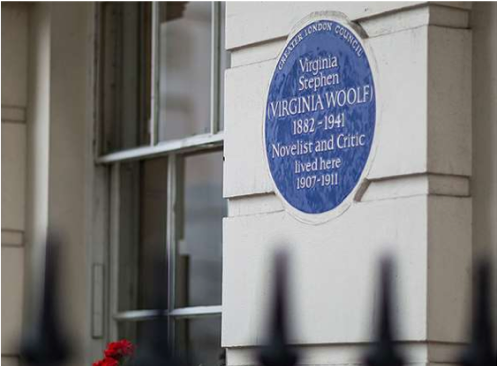
But does the history of a house add any value and more important could it even detract from it?
Certainly in America it has long been held that in certain historic districts home values rose between 5% to 35% compared with home values in undesignated neighbourhoods within the same communities,
A study by the Washington based National Trust for Historic Preservation a few years ago found that US homes in historic neighborhood designations were more likely to be protected from “out of character” refurbishments or new “inappropriate” buildings thus ensuring that those aspects that made the area so attractive to buyers are protected over time.
The study discovered that even if the home’s price didn’t rise, it is less likely to fall if the neighborhood is in a historic district. In the UK we, of course call these districts a conservation areas but it’s essentially the same.
Certainly in America it has long been held that in certain historic districts home values rose between 5% to 35% compared with home values in undesignated neighbourhoods within the same communities,
A study by the Washington based National Trust for Historic Preservation a few years ago found that US homes in historic neighborhood designations were more likely to be protected from “out of character” refurbishments or new “inappropriate” buildings thus ensuring that those aspects that made the area so attractive to buyers are protected over time.
The study discovered that even if the home’s price didn’t rise, it is less likely to fall if the neighborhood is in a historic district. In the UK we, of course call these districts a conservation areas but it’s essentially the same.
In the UK people pay a premium to live in a conservation area because they are buying into the quaintness of an area of special historic interest. In fact the status of a conservation area is not confined to rows of high value Georgian or Regency buildings but can be conferred on fishing and mining villages, 18th and 19th century suburbs, model housing estates, country houses, historic transport links and their environs, and even stretches of canal.
Also it is said that houses with blue plaques (there are reckoned to be 850 in London alone) which are affixed to the walls of houses where famous people once lived can add thousands of pounds to the value of a property.
So it seems that there is a premium to be paid for a house with an historic interest or famous residents and therefore it could be worth tracing the history of your house for that reason alone.
Various attempts have been made to add house provenance to the rest of the details provided in the sales literature with varied success. At one time, and for all I know it may still be continuing, a major estate agent employed a top house historian to provide house “readings”
Also it is said that houses with blue plaques (there are reckoned to be 850 in London alone) which are affixed to the walls of houses where famous people once lived can add thousands of pounds to the value of a property.
So it seems that there is a premium to be paid for a house with an historic interest or famous residents and therefore it could be worth tracing the history of your house for that reason alone.
Various attempts have been made to add house provenance to the rest of the details provided in the sales literature with varied success. At one time, and for all I know it may still be continuing, a major estate agent employed a top house historian to provide house “readings”
|
More recently according to an article in the Daily Telegraph - Benchmark House Histories which is based in Tring, Hertfordshire, are producing “histories for a range of properties located mainly in Southern England and are reporting a steady increase year on year in the number of enquiries they have received”.
They have found that a building’s history - when it may have been built, who the architect was (especially if a well- known name), how its usage has changed over time and details of owners and occupiers - serves to add interest in a property. |
There can be little doubt that in a tough market a property that has a well documented interesting history might have the edge over other similar properties. Does it really add value on its own and if you are using the history of your house to increase its sales potential, do you also have to be careful what you find?
 The North London flat where serial killer Dennis Nilsen slaughtered rent boys and cooked their remains was on the market a few years ago
The North London flat where serial killer Dennis Nilsen slaughtered rent boys and cooked their remains was on the market a few years ago
Stories about the life (and death) of residents who once lived in your house might be fascinating but what if you find a grisly secret? Anyone who has researched homes knows that the past was not always rosy and houses have had their share of dubious stories that might not improve sales potential.
As historian, David Olusoga presenter of A House Through Time TV programme pointed out we don’t have to go far back in our national past to find ourselves in an age where births and also deaths took place in the home rather than hospital.
So it’s not unlikely that some births and several deaths took place in your house and most likely in your bedroom. You can probably live with that – you probably do - but how about if they were murdered? Does that alter things? What if a former resident was a serial killer or committed suicide?
If you live in America you have to be careful when selling a house because in some states you must disclose whether any deaths occurred in the property within the last three years. By contrast other states explicitly tell sellers that they do not need to disclose deaths on the property to buyers.
A nationwide survey here by Sell House Fast, reveals that 36% of us wouldn’t buy a property if we were told that someone had died there. Not surprising perhaps this increases when they find out that there has been a murder or suicide and 67% of homebuyers can’t imagine living in a property with a history of violent death.
Just as an aside respondents were also concerned about other issues that may have taken place on the property, with people expressing reservations about buying a property that had been the site of rape or other violent crime (21%), followed by illegal drug production (13%) and house repossession or eviction (7%).
You can just imagine how that would read in the estate agent’s usual sales pitch –
"Semi detached, three generous bedrooms, a large garden –and the site of a gruesome murder."
Stories about the life (and death) of residents who once lived in your house might be fascinating but what if you find a grisly secret? Anyone who has researched homes knows that the past was not always rosy and houses have had their share of dubious stories that might not improve sales potential.
As historian, David Olusoga presenter of A House Through Time TV programme pointed out we don’t have to go far back in our national past to find ourselves in an age where births and also deaths took place in the home rather than hospital.
So it’s not unlikely that some births and several deaths took place in your house and most likely in your bedroom. You can probably live with that – you probably do - but how about if they were murdered? Does that alter things? What if a former resident was a serial killer or committed suicide?
If you live in America you have to be careful when selling a house because in some states you must disclose whether any deaths occurred in the property within the last three years. By contrast other states explicitly tell sellers that they do not need to disclose deaths on the property to buyers.
A nationwide survey here by Sell House Fast, reveals that 36% of us wouldn’t buy a property if we were told that someone had died there. Not surprising perhaps this increases when they find out that there has been a murder or suicide and 67% of homebuyers can’t imagine living in a property with a history of violent death.
Just as an aside respondents were also concerned about other issues that may have taken place on the property, with people expressing reservations about buying a property that had been the site of rape or other violent crime (21%), followed by illegal drug production (13%) and house repossession or eviction (7%).
You can just imagine how that would read in the estate agent’s usual sales pitch –
"Semi detached, three generous bedrooms, a large garden –and the site of a gruesome murder."
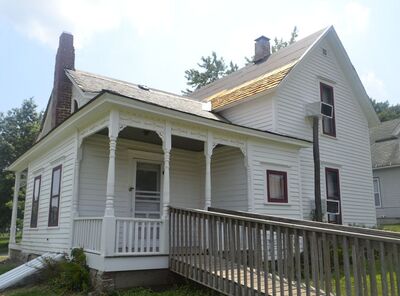 Villisca Axe Murder House Iowa. In 1912 six membes of the Moore family and two visitors were bludgeoned to death. Axe wounds were also found on each, giving rise to the home's name. The murderer was never found.
Villisca Axe Murder House Iowa. In 1912 six membes of the Moore family and two visitors were bludgeoned to death. Axe wounds were also found on each, giving rise to the home's name. The murderer was never found.
But that is not the only downside to tracing your house history if it is just for the benefit of improving a sale. What do you do if you find the house is not only the scene of an unpleasant episode but someone also reports that it is haunted?
Should you then tell your prospective purchasers that there is a ghost of Lady Mary Smythe who walks out of the mirror in the upstairs hall and screeches when there is a full moon?
Should you then tell your prospective purchasers that there is a ghost of Lady Mary Smythe who walks out of the mirror in the upstairs hall and screeches when there is a full moon?
Oh yes! and what happens when you fail to mention Lady Mary’s peregrinations and she scares the hell out of the new owners five year old son leaving him traumatised and they sue you? But as there is no such thing as ghosts (are there?), perhaps we should not dwell on this for too long.
Meanwhile over the other side of the Atlantic in the US they are so worried about home deaths that if you Google the subject you will find pages and pages of people asking if there’s a way to find out whether someone died or their house is haunted.
Meanwhile over the other side of the Atlantic in the US they are so worried about home deaths that if you Google the subject you will find pages and pages of people asking if there’s a way to find out whether someone died or their house is haunted.
|
Not surprisingly a website and App - DiedInHouse.com - which seems to be doing well –is the first web-based service that helps you find out if anyone has died at any valid US address
So what does all this mean to the house historian? Well, I suppose the lesson is, that if you are researching the back story to your house for the purpose of increasing the value and making it attractive to the market then tread carefully. |
The older and perhaps grander the house the more likely your story is going to include some, let us say, les salubrious goings on and you might want to use the edit pencil on some of the tales if you think it is going to have a negative effect on your ability to sell.
For me the joy of finding out more about the celebrations, dramas and tragedies of the people who lived in my house, my ancestor’s house or client’s houses - warts and all - is all consuming. I will go where that leads me.
FindmyPast surveyed house buyers last year and found that historical properties are becoming increasingly sought after across the UK. Their findings reveal that over a quarter of surveyed homebuyers in the UK are prepared to pay £16,000 more on average for a house with a history, despite the recent sharp rise in property prices. The survey found that of those actively seeking property to buy 22% were actively researching the history of their home.
So! am sure that in the right area and with the right building, a well documented house provenance does no harm and might well add to the value, but as we have seen it depends on the story.
For me the joy of finding out more about the celebrations, dramas and tragedies of the people who lived in my house, my ancestor’s house or client’s houses - warts and all - is all consuming. I will go where that leads me.
FindmyPast surveyed house buyers last year and found that historical properties are becoming increasingly sought after across the UK. Their findings reveal that over a quarter of surveyed homebuyers in the UK are prepared to pay £16,000 more on average for a house with a history, despite the recent sharp rise in property prices. The survey found that of those actively seeking property to buy 22% were actively researching the history of their home.
So! am sure that in the right area and with the right building, a well documented house provenance does no harm and might well add to the value, but as we have seen it depends on the story.
Resources and links mentioned in this blog
David Rose in Daily Telegraph “Could your house be a secret goldmine?”
Benchmark House Histories
National Trust for Historic Preservation
BBCA House Through Time
Who died in House
Christopher Middleton in Daily Telegraph Why houses will sell
David Rose in Daily Telegraph “Could your house be a secret goldmine?”
Benchmark House Histories
National Trust for Historic Preservation
BBCA House Through Time
Who died in House
Christopher Middleton in Daily Telegraph Why houses will sell
An important part of tracing your house history is discovering more about the people who lived in it and how the house formed a backdrop to their lives. Finding out more about the celebrations, dramas and tragedies of the people who lived in your house- discovering their stories - is uniquely linked to the history of the house. One of the key places to start is the census.
The census has been taken every ten years since 1801 when the government wanted to ascertain how many men were available to fight the Napoleonic wars at that time. The idea stuck and with the exception of 1941 and in Ireland 1921 is a key resource for the house historian. However, the first census which contained personal information of use to the historian is the 1841 census. Generally, the census is only available to view after 100 years so from 1841-1921 it is possible to discover who lived in every house in the country. The census can be searched by address and we show you how and provide some useful tips.
We are showing examples of census data from Find my Past which has an excellent facility for finding an address but other paid for sites also have census information. For more info see our Census page
The census has been taken every ten years since 1801 when the government wanted to ascertain how many men were available to fight the Napoleonic wars at that time. The idea stuck and with the exception of 1941 and in Ireland 1921 is a key resource for the house historian. However, the first census which contained personal information of use to the historian is the 1841 census. Generally, the census is only available to view after 100 years so from 1841-1921 it is possible to discover who lived in every house in the country. The census can be searched by address and we show you how and provide some useful tips.
We are showing examples of census data from Find my Past which has an excellent facility for finding an address but other paid for sites also have census information. For more info see our Census page
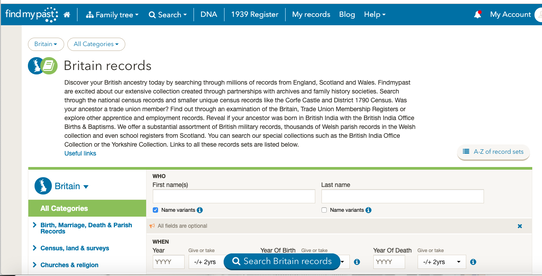
Go to the 'A-Z of Record Sets' drop down from the 'Search Records' menus.
Next enter the year of the census in the search bar
or scroll down to find the individual census year you require
or scroll down to find the individual census year you require

.
The required census page will then load and you will see the option to search by address for that census with the 1901 and 1911 census years, there is an 'Address' tab on the search page that would then need to be clicked to search by address
The required census page will then load and you will see the option to search by address for that census with the 1901 and 1911 census years, there is an 'Address' tab on the search page that would then need to be clicked to search by address
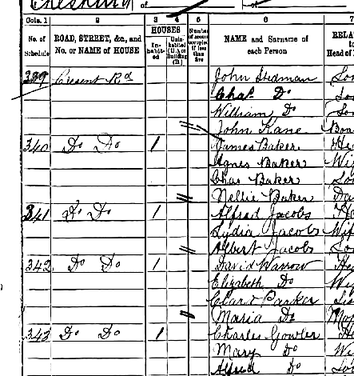
If you cannot find the address first time, check the registration district as it may have changed and examine old maps and street directories online for clues that may help you locate the house in the census. The street directory may give you a resident’s name which you could also use in your search.
Search for ‘St’ as well as ‘Street’, ‘Road’ and ‘Rd’, ‘Avenue’ and ‘Ave’, and ‘Ln’ in addition to ‘Lane’, etc, or miss these suffixes off entirely. For example, Blacknest as well as Blacknest Road
The 1841 Census did not require an exact address just a place name. From 1851 however, an exact address giving the house number or name was required. Too often however in rural areas the only address given was the name of the village or parish. Also remember that the numbers in the extreme left-hand column are schedule numbers, and not house numbers.
A Schedule was a form that the enumerator delivered to each household during the week before the census was taken to be completed by the head of the household on the census night. Each house has a separate schedule number.
The enumerator visited all of the houses in his patch, to collect these schedules and then he copied the information on it onto into his enumerator’s book, in schedule number order.
Search for ‘St’ as well as ‘Street’, ‘Road’ and ‘Rd’, ‘Avenue’ and ‘Ave’, and ‘Ln’ in addition to ‘Lane’, etc, or miss these suffixes off entirely. For example, Blacknest as well as Blacknest Road
The 1841 Census did not require an exact address just a place name. From 1851 however, an exact address giving the house number or name was required. Too often however in rural areas the only address given was the name of the village or parish. Also remember that the numbers in the extreme left-hand column are schedule numbers, and not house numbers.
A Schedule was a form that the enumerator delivered to each household during the week before the census was taken to be completed by the head of the household on the census night. Each house has a separate schedule number.
The enumerator visited all of the houses in his patch, to collect these schedules and then he copied the information on it onto into his enumerator’s book, in schedule number order.
1911 Census – a few problems searching by address.
The address given in the 1911 Census is taken directly from the entry made on the form at the time by the householder. This leads to several problems.
In 1911, householders did not have a uniform way of stating their address as we do today. Some people listed their address as a house name followed by a town rather than a house number followed by the street name and this was the information that was transcribed
In 1911, householders did not have a uniform way of stating their address as we do today. Some people listed their address as a house name followed by a town rather than a house number followed by the street name and this was the information that was transcribed
The original form only provided a small space for the address, and that only encouraged the householder to either write smaller and perhaps illegibly as well as abbreviate the address to make it fit.
The spelling of the name of the property or road may have changed over time.
An example is Blackness Road in the town of Crowborough, East Sussex. In 1911 it was variously described as just Blackness or Blacknest and was in the registration district of Uckfield whilst in an earlier census it was East Grinstead and in more modern times has it’s own registration district.
The spelling of the name of the property or road may have changed over time.
An example is Blackness Road in the town of Crowborough, East Sussex. In 1911 it was variously described as just Blackness or Blacknest and was in the registration district of Uckfield whilst in an earlier census it was East Grinstead and in more modern times has it’s own registration district.
Finding an address in the 1921 census
The 1921 Census on FindmyPast has even more advanced search features- not only can you search by address, but you can search by other members of the household, which is particularly useful if you're trying to fill in the blanks.
To find an address click on the 1921 Census tab on the home page then the Find an address in the 1921 census tab.
Type in your street and then the location and set the search radius (miles) bar. If you are sure of the location, you might set this to zero or perhaps 5 miles radius. If not increase the radius but be careful you don’t get overwhelmed with variants on your street name.
Then click on your results and you will be taken to a list of all the houses on that particular road or street. From there, you simply select the house you're interested in, and you will be taken to a transcription of the census record for that property.
Do make sure you click on the “Spelling Variants” tab. As before I looked for houses in Blackness Road Crowborough and found several but not the house I was looking for. When I clicked on spelling variants a new selection appeared which included Blacknest Road. Blacknest was an old spelling for the area and from there I was able to find my house and a lot more.
TIP: When you first enter the find an address in the 1921 census page you could click on Try an advanced search which then provides a drop-down menu to find an address in the 1841- 2021 census as well as the 1939 Register.
To find an address click on the 1921 Census tab on the home page then the Find an address in the 1921 census tab.
Type in your street and then the location and set the search radius (miles) bar. If you are sure of the location, you might set this to zero or perhaps 5 miles radius. If not increase the radius but be careful you don’t get overwhelmed with variants on your street name.
Then click on your results and you will be taken to a list of all the houses on that particular road or street. From there, you simply select the house you're interested in, and you will be taken to a transcription of the census record for that property.
Do make sure you click on the “Spelling Variants” tab. As before I looked for houses in Blackness Road Crowborough and found several but not the house I was looking for. When I clicked on spelling variants a new selection appeared which included Blacknest Road. Blacknest was an old spelling for the area and from there I was able to find my house and a lot more.
TIP: When you first enter the find an address in the 1921 census page you could click on Try an advanced search which then provides a drop-down menu to find an address in the 1841- 2021 census as well as the 1939 Register.
|
*Trace My House has no connection with FindMyPast. We recommend using it simply because it is the only service that offers the address lookup facility and therefore is of great value to house historians.
|
 Google indexes around 20 billion pages each day
Google indexes around 20 billion pages each day If like me you use Google for just about everything, you probably think you know your way around the search engine giant. I was using it the other day to search for some records relating to a previous resident of a house and as usual getting lots of irrelevant information back.
The trouble is that Google is a great resource but when there are hundreds of sites and copious amounts of data to sift through, most of what it gives you just does not help your research.
I remember reading once that Google has a few tricks up it's sleeve to help increase our chances of successful searching and so I set about finding what these were and evaluating them.
What I didn’t know and it has no relevance to this article was that Google was originally called BackRub? Did you know that? No I didn’t either. I am not sure it would have been the success it is today if you we were to say to someone “ I BackRubbed my ancestor today and ……”
Apparently it was named this because it was designed to retrieve backlinks. Anyway in 1997, the authors - Larry Page and Sergey Brin decided on a new name - a twist on “googol,” a mathematical term represented by the numeral one followed by 100 zeros and so ended up with Google.
I digress. So returning to Google, I discovered there were ways of nudging Google to give you more accurate answers to enable you to be more successful.
Narrow your search- apply quotation marks to string search
When you add quotation marks to a word or phrase in Google it narrows down the results you get back. So for instance, type Bill Stevensand you get various responses and as well as Bill Stevens you get William Stevens and sometimes lists of Bill’s and Steven’s
Using “Bill Stevens” means Google will search only for that term. If you are searching for a person you might also consider “Stevens Bill”because some genealogy or family history sites place the last name first. You can use quotation marks for other phrases if you want it to be exact. So for instance Accacia Street will give you many alternatives including road and avenue, whereas “Accacia Street”will narrow it down to that phrase only.
When you add quotation marks to a word or phrase in Google it narrows down the results you get back. So for instance, type Bill Stevensand you get various responses and as well as Bill Stevens you get William Stevens and sometimes lists of Bill’s and Steven’s
Using “Bill Stevens” means Google will search only for that term. If you are searching for a person you might also consider “Stevens Bill”because some genealogy or family history sites place the last name first. You can use quotation marks for other phrases if you want it to be exact. So for instance Accacia Street will give you many alternatives including road and avenue, whereas “Accacia Street”will narrow it down to that phrase only.
Exclude what is unnecessary - the Minus Sign
Use the minus sign if you want to exclude a specific word from your Google search results. When searching for a person or place we often find results that we are not looking for turn up again and again and we have to sift through pages to find the few we are really interested in.
For instance, if we were searching for Accacia Street, Welwyn Hatfield and one in Doncaster keeps coming up then we want to exclude Doncaster from the search.
So we write “Accacia Street, Welwyn -Doncaster. Take care not to leave a space between the minus sign and the word. That then fixes all results on Welwyn
Use the minus sign if you want to exclude a specific word from your Google search results. When searching for a person or place we often find results that we are not looking for turn up again and again and we have to sift through pages to find the few we are really interested in.
For instance, if we were searching for Accacia Street, Welwyn Hatfield and one in Doncaster keeps coming up then we want to exclude Doncaster from the search.
So we write “Accacia Street, Welwyn -Doncaster. Take care not to leave a space between the minus sign and the word. That then fixes all results on Welwyn
Get Site Specific Results
Sometimes you will need to search a specific website for a name or place. Use site: immediately before the URL and then your search terms.
“Bill Stevens” birth extracts lots of responses from all the top genealogical sites out there. If you know that you only want to search a specific website then write your query as follows.
“Bill Stevens” birth site:ancestry.co.uk.
You can also search for the text only , and exclude the titles by using allintext
Sometimes you will need to search a specific website for a name or place. Use site: immediately before the URL and then your search terms.
“Bill Stevens” birth extracts lots of responses from all the top genealogical sites out there. If you know that you only want to search a specific website then write your query as follows.
“Bill Stevens” birth site:ancestry.co.uk.
You can also search for the text only , and exclude the titles by using allintext
Getting exactly what you want using AND
Google will automatically assume that you mean AND between each of your search terms and a basic search will only return pages that include all of your search terms. So you do not need to add AND between search phrases. HOWEVER, if you want to be sure that all terms that you require are searched then add AND between each of them.
By the way it doesn’t matter if you use upper or lower case in your searches in Google with the exception of AND / OR.
I also discovered that Google ignores most common punctuation such as commas and full stops. So a search for Bill Stevens, Norwich, England will return the same results as bill stevens norwich england.
Google will automatically assume that you mean AND between each of your search terms and a basic search will only return pages that include all of your search terms. So you do not need to add AND between search phrases. HOWEVER, if you want to be sure that all terms that you require are searched then add AND between each of them.
By the way it doesn’t matter if you use upper or lower case in your searches in Google with the exception of AND / OR.
I also discovered that Google ignores most common punctuation such as commas and full stops. So a search for Bill Stevens, Norwich, England will return the same results as bill stevens norwich england.
Getting the right order
It matters how you set out your search and the order you use. Google will show results that contain all of your search terms, but priority is given to the earliest terms you use in your query.
A query for bill stevens marriage chelmsford essex returns different ranked order than marriage bill stevens chelmsford essex. Place the most important term first, and then set out your search terms in a way that makes sense.
Not sure how to spell it?
If you are not sure how to spell a word or phrase you can use the asterisk * or wildcard in the search query and Google looks for the best matches.
You can also use the wildcard *(asterisk) at the end of a question or phrase such as William Stevens was born in*
Or you may put it in between two words if you think there is a word in the middle of your search phrase that will narrow down your search - such as William * Stevens
It matters how you set out your search and the order you use. Google will show results that contain all of your search terms, but priority is given to the earliest terms you use in your query.
A query for bill stevens marriage chelmsford essex returns different ranked order than marriage bill stevens chelmsford essex. Place the most important term first, and then set out your search terms in a way that makes sense.
Not sure how to spell it?
If you are not sure how to spell a word or phrase you can use the asterisk * or wildcard in the search query and Google looks for the best matches.
You can also use the wildcard *(asterisk) at the end of a question or phrase such as William Stevens was born in*
Or you may put it in between two words if you think there is a word in the middle of your search phrase that will narrow down your search - such as William * Stevens
Search a date range
If you know the approximate date of an event you could narrow down search results by using two full stops between a date range - Date..Date
So, enter - Birth “William Stevens” 1835..1855and that will give you the birth of all the William Stevens between 1835 and 1855
You could exclude a certain date by writing -dateafter the search terms as in
“William Stevens” 1835..1855 -1850 so you get all mentions of his birth between 1835 and 1855 excluding any in 1850.
Search multiple words - or
If you are looking for a place or person and you think that it might be known by various names then use ORand Google will return all the instances of these combinations.
For instance - William Stevens OR Bill Stevens.
If you know the approximate date of an event you could narrow down search results by using two full stops between a date range - Date..Date
So, enter - Birth “William Stevens” 1835..1855and that will give you the birth of all the William Stevens between 1835 and 1855
You could exclude a certain date by writing -dateafter the search terms as in
“William Stevens” 1835..1855 -1850 so you get all mentions of his birth between 1835 and 1855 excluding any in 1850.
Search multiple words - or
If you are looking for a place or person and you think that it might be known by various names then use ORand Google will return all the instances of these combinations.
For instance - William Stevens OR Bill Stevens.
Search images using an image
If you have down loaded a photo of a house or village scene but cannot remember where or what it was you could try asking Google to search it on Google Images. Go to image and then click on the camera icon and you will be offered the opportunity to input an url for the picture or upload from your computer. Google will then show you similar images that can be found on the web.
A word of warning. It seems that if you use some of these shortcuts often, or several times in a row, Google may ask you to confirm you are a real person not a robot and take you to a captcha or verificiation page. That’s ok, just follow their instructions – complete the verification and carry on.
Finally, these tips are simple to use but unless you use them often it might be that you forget the terms to use. One simple way round this is to use Googles Advanced search facility.
Click Settings on your google search page and then choose from the dropdown list Advanced search.
Finally, these tips are simple to use but unless you use them often it might be that you forget the terms to use. One simple way round this is to use Googles Advanced search facility.
Click Settings on your google search page and then choose from the dropdown list Advanced search.
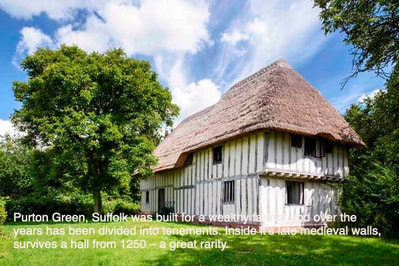 Purton Green, Suffolk was built for a wealthy farmer and over the years has been divided into tenements. Inside it’s late medieval walls, survives a hall from 1250 – a great rarity.
Purton Green, Suffolk was built for a wealthy farmer and over the years has been divided into tenements. Inside it’s late medieval walls, survives a hall from 1250 – a great rarity.
Finding out more about the celebrations, dramas and tragedies of the people who lived in your house- discovering their stories - is dealt with elsewhere in detail. Here I take a look at how the ordinary house has evolved and look for clues which may help you date the age of your house.
Hopefully you have been lucky enough to have collected some documentary evidence, of which the most obvious are the deeds of the house. These should provide you with details of the building or reconstructiondate and possibly the names of former owners and sometimes tenants. But if you do not have these, or they are not clear, you are going to have to do some detective work to discover its approximate age based upon the evidence that the house presents today.
However, it is not always clear nor easy to determine the age of a house, especially if it is an ordinary town house or rural building. Also, whilst many larger older houses have evidence of their history, smaller homes are not always so fortunate. Not only that but the status of a building whether residential or non-residential is likely to vary over the years. Houses that were built to suit a particular need or requirement may have been adapted when that use was no longer required.
Many of the older houses we see today were not built as dwellings but for other purposes, and have been converted for use as homes.
Hopefully you have been lucky enough to have collected some documentary evidence, of which the most obvious are the deeds of the house. These should provide you with details of the building or reconstructiondate and possibly the names of former owners and sometimes tenants. But if you do not have these, or they are not clear, you are going to have to do some detective work to discover its approximate age based upon the evidence that the house presents today.
However, it is not always clear nor easy to determine the age of a house, especially if it is an ordinary town house or rural building. Also, whilst many larger older houses have evidence of their history, smaller homes are not always so fortunate. Not only that but the status of a building whether residential or non-residential is likely to vary over the years. Houses that were built to suit a particular need or requirement may have been adapted when that use was no longer required.
Many of the older houses we see today were not built as dwellings but for other purposes, and have been converted for use as homes.
 A date can help you determine how old your house is but be aware it may not be the date it was built
A date can help you determine how old your house is but be aware it may not be the date it was built
To illustrate the dynamic role of the house over the years, just take a look today at the larger farmhouses which have been rehabilitated as luxury homes or bed and breakfast accommodation and the many smaller former workmens’ cottages that have been bought by people as a retirement or weekend home. Once the most basic of houses they have been converted and now serve people of a much higher social status than those that they were originally built for.
On the other hand we can see villas, especially in towns, that started life as a home for the wealthy and have since been subdivided into flats or tenements and are home to a completely different sort of resident.
You only have to look at East London to see examples of how dramatically a building could change from a prestigious home to a tenement. In the 18th and 19th centuries rural dwellers moved to London in their droves to search for work and seek a better quality of life Landlords eager to take advantage, divided their buildings into flats and tenements which became insanitary and grossly overcrowded. The living conditions for people who lived in these houses were a million miles away from the rich merchants for whom the homes were built.
So how do you date your house? Well, if you are really lucky you will find the house has a date on the front door, a chimney stack,or the external wall but even then you have to be careful because the date may not be when the house was first built. It could be the date when it was repaired or when a major or minor reconstruction had taken place.
You may find your house has a fire insurance plaque. These plaques which are placed on the outside of the house date from the period when each insurance company maintained its own fire brigade. They only attended fires if the building in question was insured by them, hence the plaque outside. Finding these today is becoming rarer and anyway they were mainly found in towns and cities.
On the other hand we can see villas, especially in towns, that started life as a home for the wealthy and have since been subdivided into flats or tenements and are home to a completely different sort of resident.
You only have to look at East London to see examples of how dramatically a building could change from a prestigious home to a tenement. In the 18th and 19th centuries rural dwellers moved to London in their droves to search for work and seek a better quality of life Landlords eager to take advantage, divided their buildings into flats and tenements which became insanitary and grossly overcrowded. The living conditions for people who lived in these houses were a million miles away from the rich merchants for whom the homes were built.
So how do you date your house? Well, if you are really lucky you will find the house has a date on the front door, a chimney stack,or the external wall but even then you have to be careful because the date may not be when the house was first built. It could be the date when it was repaired or when a major or minor reconstruction had taken place.
You may find your house has a fire insurance plaque. These plaques which are placed on the outside of the house date from the period when each insurance company maintained its own fire brigade. They only attended fires if the building in question was insured by them, hence the plaque outside. Finding these today is becoming rarer and anyway they were mainly found in towns and cities.

So without a date or any clues as to the age of your house we need to look for other clues and start by taking account of settings. Firstly, note if it is in a town or village street, in a small hamlet or isolated in a rural area? Does it have any distinguishing geographical features around it such as a stream or hill? If in a street, is it part of a terrace and are all the buildings uniform? Does it appear to be part of a large building now subdivided? Note how it compares in size, age and general character with the joining or nearby houses.
Very few small houses have survived before the Tudor period. Historians have had to rely on excavations on the sites of deserted mediaeval villages to find out more about them. At that time the house was not expected to last more than a lifetime and the evidence suggests that the earliest huts were basically circular or rectangular.
In rural areas most small and medium-sized houses were built by landowners engaged in agriculture - particularly farmers of various classes. Whereas in towns the majority of houses were built by people employed in industry and commerce such as merchants and tradesmen.
Having considered your homes environment we need see if there are any clues as to it’s former use that may help us.
Lots of people in rural areas were employed in agricultural trades but there was also the need in every village for craftsmen whose houses included their workshops. Today these trades are long gone but their houses could still show evidence of it.
After farming the most important rural trade was probably milling, with water and windmills going back to mediaeval times although most surviving examples only date from the 18thand 19thcenturies.
Very few small houses have survived before the Tudor period. Historians have had to rely on excavations on the sites of deserted mediaeval villages to find out more about them. At that time the house was not expected to last more than a lifetime and the evidence suggests that the earliest huts were basically circular or rectangular.
In rural areas most small and medium-sized houses were built by landowners engaged in agriculture - particularly farmers of various classes. Whereas in towns the majority of houses were built by people employed in industry and commerce such as merchants and tradesmen.
Having considered your homes environment we need see if there are any clues as to it’s former use that may help us.
Lots of people in rural areas were employed in agricultural trades but there was also the need in every village for craftsmen whose houses included their workshops. Today these trades are long gone but their houses could still show evidence of it.
After farming the most important rural trade was probably milling, with water and windmills going back to mediaeval times although most surviving examples only date from the 18thand 19thcenturies.
The mill usually had a mill house adjoining and many watermills survive today and have been converted into prestigious homes. We are less likely to see converted windmills.
Every village and town also required other craftsmen such as the wheelwright and smith which were vital trades in pre-industrial times. Their workshops and homes have in some cases survived.
Every village and town also required other craftsmen such as the wheelwright and smith which were vital trades in pre-industrial times. Their workshops and homes have in some cases survived.
In industrial areas trades such as spinning and weaving were important cottage industries and many of these homes have survived. Often these can be distinguished by the long horizontal windows on the upper floors which provided the necessary daylight for the looms.
 WEAVERS COTTAGE Colcar, West Yorks Late 18th century weavers house at Golcar
WEAVERS COTTAGE Colcar, West Yorks Late 18th century weavers house at Golcar
In most cases chapels and churches converted to residential use can be easily recognised, but some former places of worship may not be so apparent. In the early days of non-conformity, particularly the Methodist movement the congregation often met at the houses of the leading members. So an ordinary looking house could have been a chapel A clue may often be found in the house names such as Chapel House, Bethal, Ebenezer, Glenorchy etc.

STREET NAMES
Whilst the name of a house could be a clue as to its former use, the street name may also provide evidence of it’s age, particularly from the 18th century onwards.
The visit by a monarch or a national event could be celebrated by naming streets in honour of the occasion. Following a visit from George III new streets were given names like Gloucester Lodge, Gloucester Road ,Gloucester Row. Look for names that suggest a royal visit such as Royal Crescent, Royal Terrace. Waterloo Place or Victoria Terrace.
Some place names are not what they seem. We might laugh at or be bemused by names like Ha-Ha Road in Woolwich but a ha-ha is a type of sunken fence that was commonly used in landscaped gardens and parks in the eighteenth century and so this might give us a clue as to it’s origins. Slag Lane so called because once when a carriage got stuck in mud, slag from a nearby colliery was put down on the surface and the name stuck. Locals are embarrassed by Crotch Crescent but William Crotch who it was named after was a Professor of Music locally.
You might not want to live in Butthole Lane, Sheffield but it takes its name from the old English word ‘butt’, which was a target. It is believed Butthole Lane was where archers practiced shooting at targets during the Tudor period. Finally Trump Street has nothing to do with the former US president, a stone’s throw from the Guildhall London and is simply a corruption of trumpet and is where the brass instrument makers would live.
Whilst the name of a house could be a clue as to its former use, the street name may also provide evidence of it’s age, particularly from the 18th century onwards.
The visit by a monarch or a national event could be celebrated by naming streets in honour of the occasion. Following a visit from George III new streets were given names like Gloucester Lodge, Gloucester Road ,Gloucester Row. Look for names that suggest a royal visit such as Royal Crescent, Royal Terrace. Waterloo Place or Victoria Terrace.
Some place names are not what they seem. We might laugh at or be bemused by names like Ha-Ha Road in Woolwich but a ha-ha is a type of sunken fence that was commonly used in landscaped gardens and parks in the eighteenth century and so this might give us a clue as to it’s origins. Slag Lane so called because once when a carriage got stuck in mud, slag from a nearby colliery was put down on the surface and the name stuck. Locals are embarrassed by Crotch Crescent but William Crotch who it was named after was a Professor of Music locally.
You might not want to live in Butthole Lane, Sheffield but it takes its name from the old English word ‘butt’, which was a target. It is believed Butthole Lane was where archers practiced shooting at targets during the Tudor period. Finally Trump Street has nothing to do with the former US president, a stone’s throw from the Guildhall London and is simply a corruption of trumpet and is where the brass instrument makers would live.
HOUSENAMES
House names often reflect their past use and there are many - The Coach House, The Old School House, The Old Rectory, The Old Vicarage, The Old Post Office, Mill House, The Granary, The Grange, The Bothy, Blacksmiths Cottage, Old Forge, The Old Station House, The Old Police House, The Old Surgery and Railway Cottage. All of these are signposts to the history of your home.
Some homes have been named after people who lived there and others reflect the environment around the house- Honeysuckle, Orchard, Oaktree, Hillside etc. These are probably not useful in helping you date your house but might give you a clue about what the area was like at one time.
So! having examined your house, its environs and looked at obvious clues the next stage is to examine the architecture and style of your house. to try to date it.
Howoldismyhouse.com has examples of house styles of every period and plenty of clues to help you determine the age of your house. Below are a few more examples of houses whose origins might give a clue plus one surprise house. For more read our blog A Brief Study of House Names
House names often reflect their past use and there are many - The Coach House, The Old School House, The Old Rectory, The Old Vicarage, The Old Post Office, Mill House, The Granary, The Grange, The Bothy, Blacksmiths Cottage, Old Forge, The Old Station House, The Old Police House, The Old Surgery and Railway Cottage. All of these are signposts to the history of your home.
Some homes have been named after people who lived there and others reflect the environment around the house- Honeysuckle, Orchard, Oaktree, Hillside etc. These are probably not useful in helping you date your house but might give you a clue about what the area was like at one time.
So! having examined your house, its environs and looked at obvious clues the next stage is to examine the architecture and style of your house. to try to date it.
Howoldismyhouse.com has examples of house styles of every period and plenty of clues to help you determine the age of your house. Below are a few more examples of houses whose origins might give a clue plus one surprise house. For more read our blog A Brief Study of House Names
|
Just to show that not everything is as it seems this is a house in Leinster Gardens London or is it? When they planned the route of the London underground line between Paddington and Bayswater in 1868 they had to demolish 23 and 24 Leinster Gardens This was a fairly prestigious terrace of five story houses, and it was decided to build a 5ft-thick facade which matched the houses either side of the break.
|
Trace my House
Occasional blog with hints and tips to help you trace the history of your house and its occupants.and a general review of the world of house historians
Archives
June 2024
September 2022
June 2022
December 2019
August 2019
June 2019
May 2019
Categories
Recent Posts
The HouseLand Registry
Maps Manorial Records Other Records Postcards & Photos Enclosures Books & House histories Church & Parish Records |
The People |
|
OUR ADVERTISING POLICY - This website receives no funding or any other form of award and is run voluntarily to provide information to those who want to trace the history of their house. We would like to say thank you to all those who have or will in future click on the advertisements they find on this page. We know they can be a nuisance or distraction and we try to make sure that they are relevant to the information we provide and our readers. However the modest income we receive from them keep the web site going. So thank you.










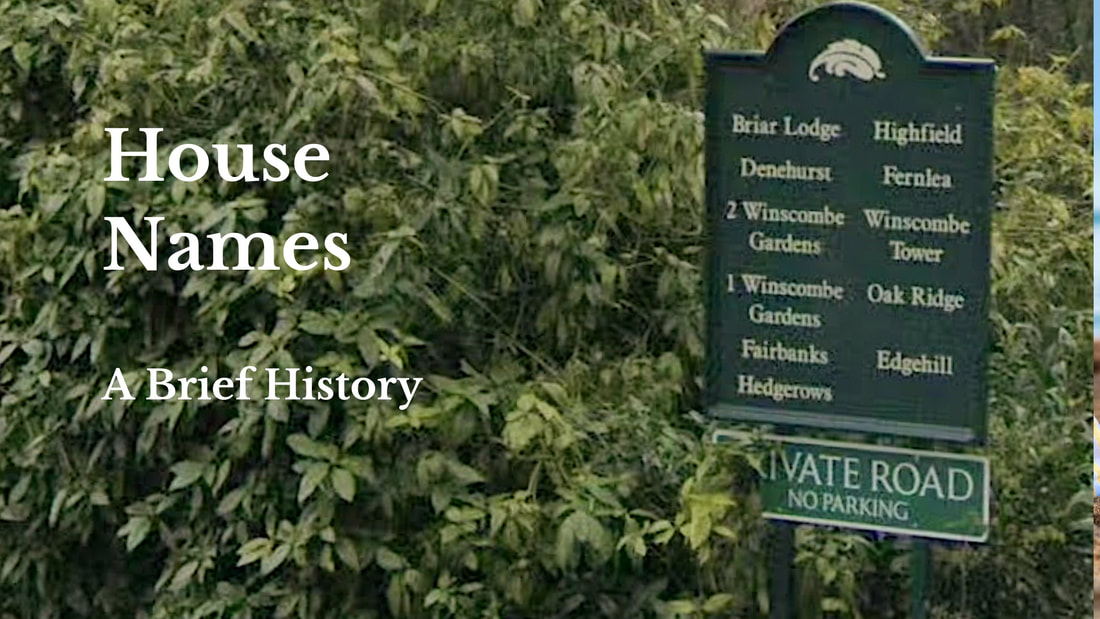





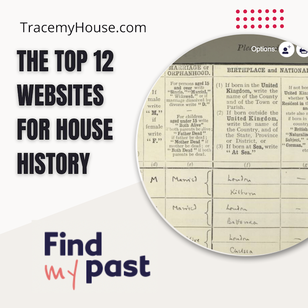
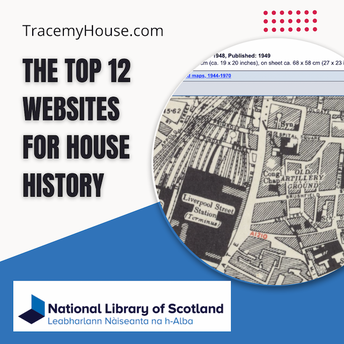




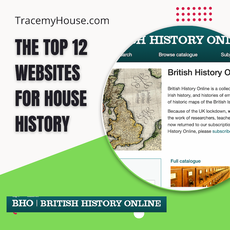
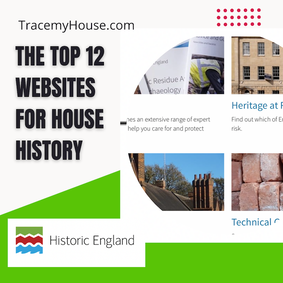

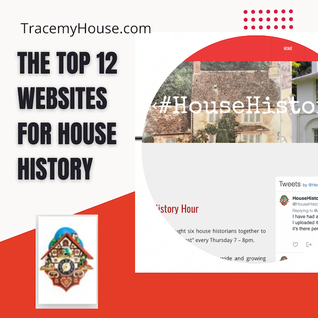
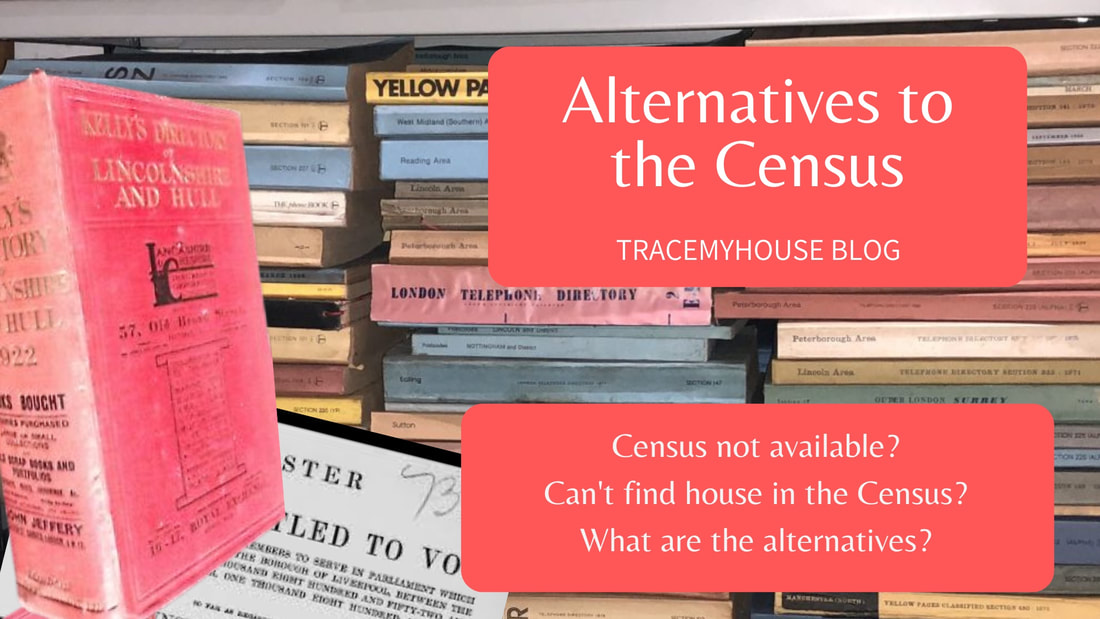
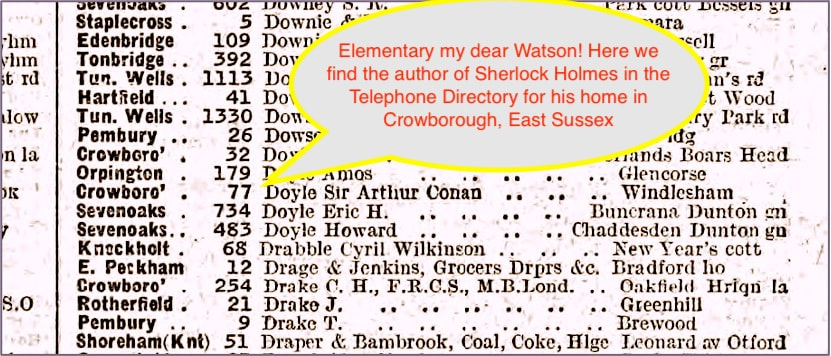

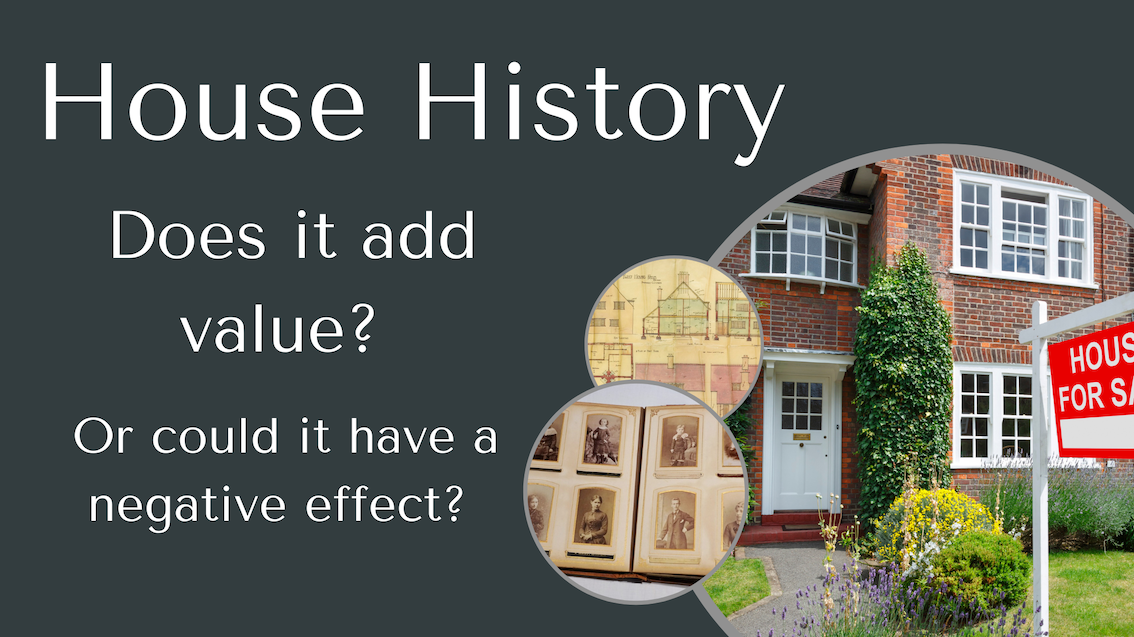
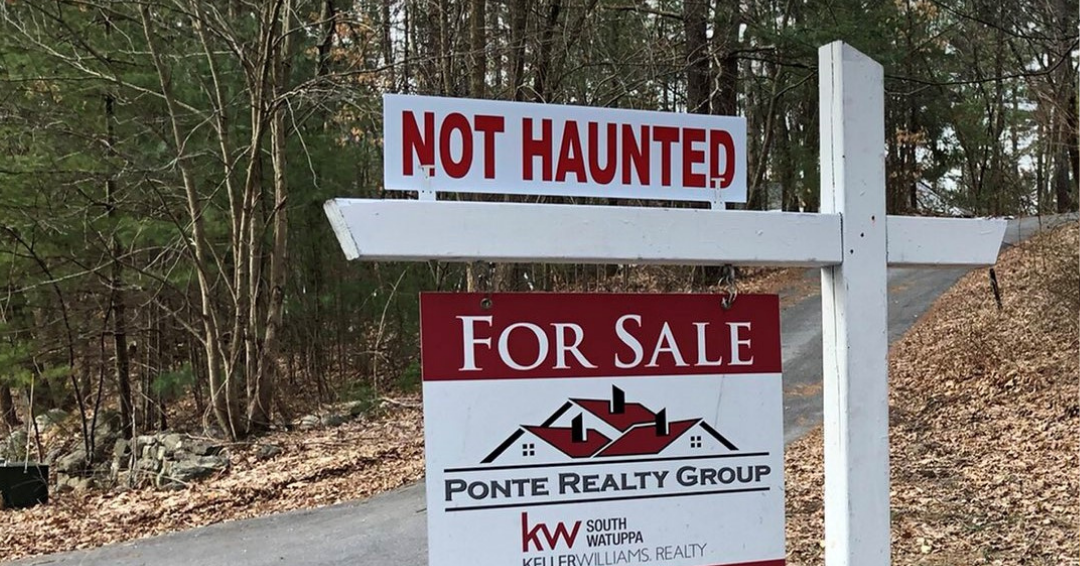
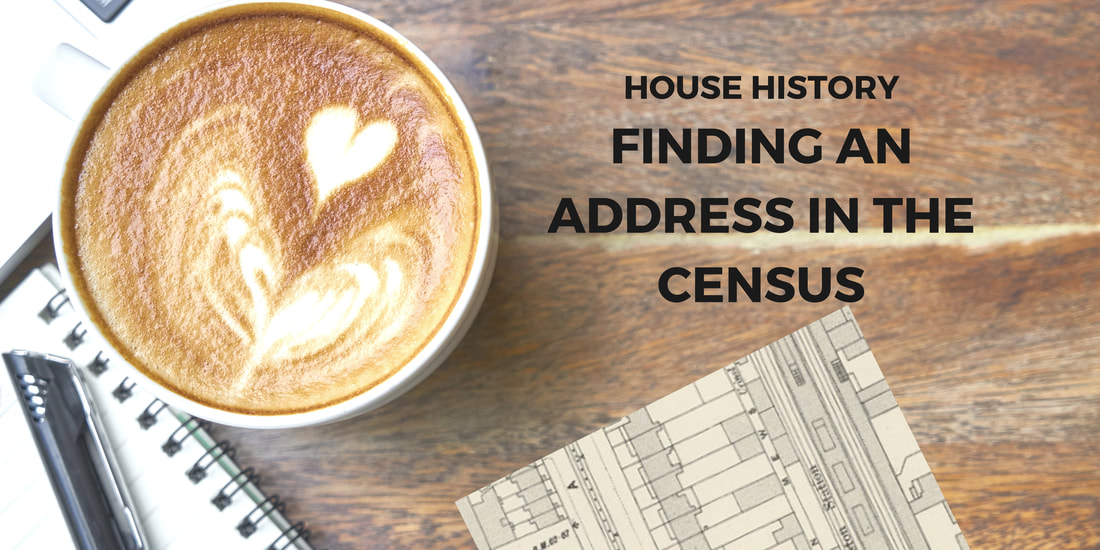
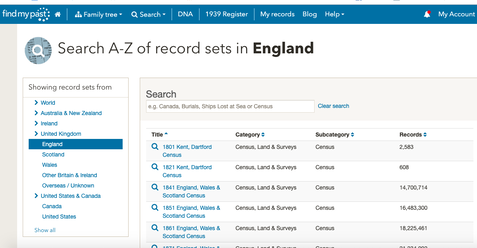






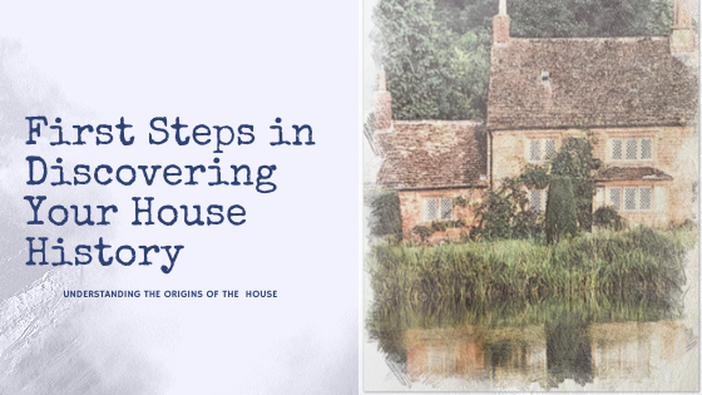

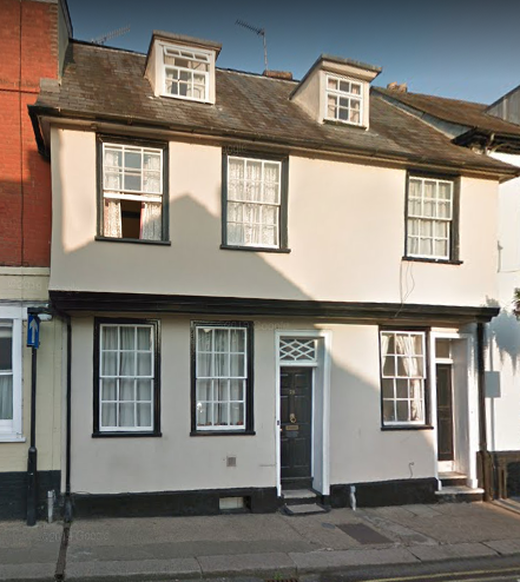
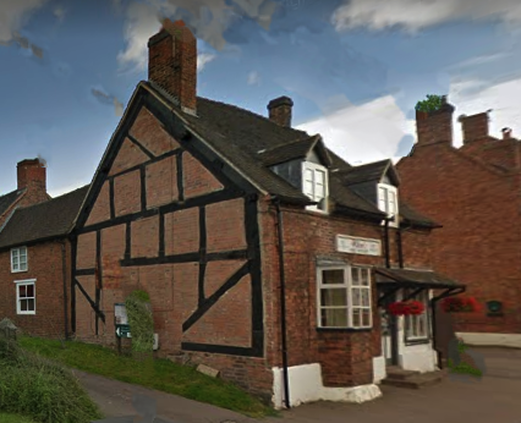
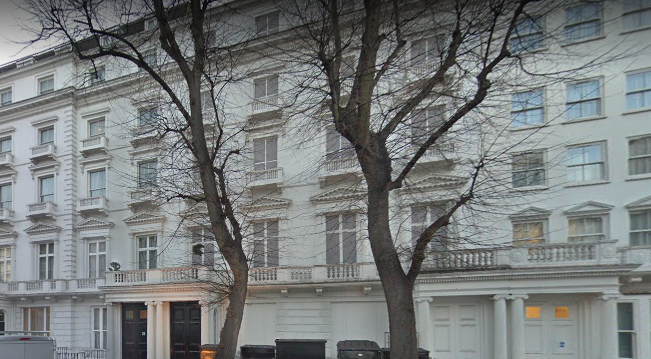


 RSS Feed
RSS Feed